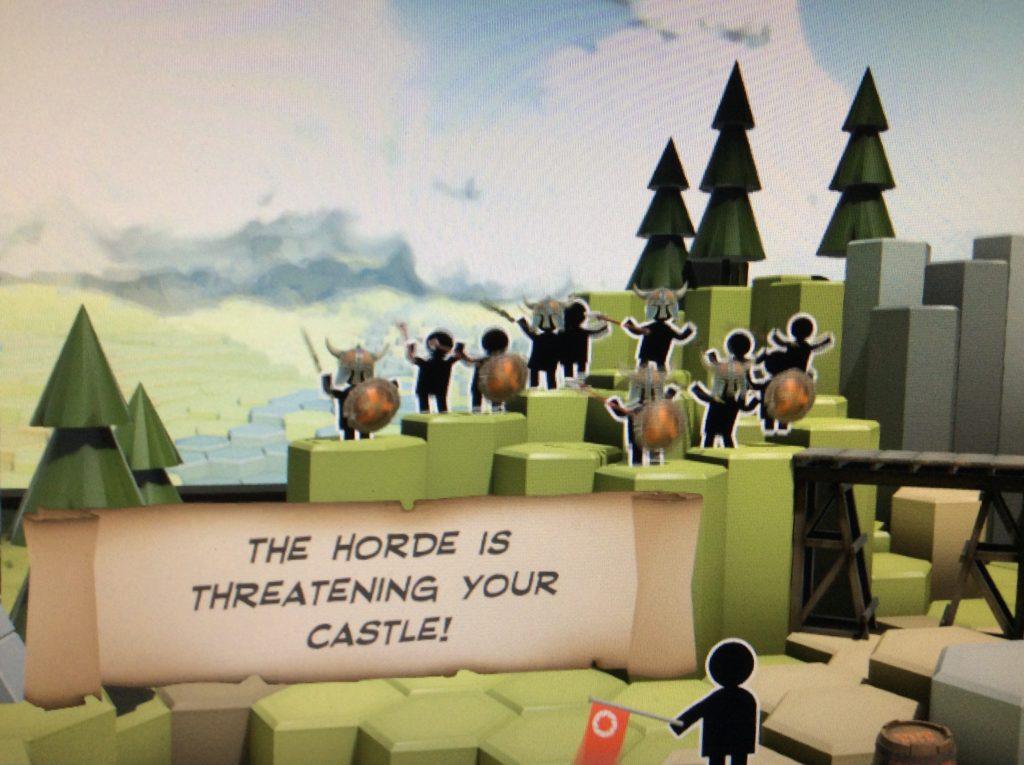BY CARSTEN SAVAGE (’17)
Virtual reality, or immersion within a simulated world, made a comeback in 2013 and has been one of the hottest peripherals in the technological world ever since. While there are currently many different virtual reality devices on the market, HTC’s Vive is considered the best of them, combining high-resolution screens, comfort and a “room-scale” feature to provide the optimal experience.
Initially, the Vive is relatively complicated to set up. The Vive uses two “lighthouses,” or large cameras that track the player’s position within a room, and these must be placed on opposite corners of the space. I drilled holes into the walls to secure the mounts about seven feet high, attached the cameras and angled them down towards me. I then “charted” the boundaries of the room so that the cameras would understand the size of the area in which I would move around.

To connect the Vive headset to my computer, I plugged USB, HDMI and power cords into a small box, which I then connected to my computer. I adjusted the straps of the headset to fit my head, which is more challenging than I had expected, and attached the earphones to the Vive. After raising the controllers and Vive up into the air to allow the lighthouses to recognize and sync with them, the computer was ready to relate virtual reality programs to the Vive.
I put the headset on and immediately found a robot floating a foot away from me. In his droid voice, he taught me how to use the controllers, which employ buttons, thumb pads and triggers to allow the player to interact with the virtual space. When I pressed one button, confetti popped out of my hand. As I pressed the thumb pad, a huge balloon appeared, which I whacked at the robot. Thus concluded the tutorial.
I then started a game called Zombie Training Simulator, an experience in which cardboard cutouts of zombies race towards you while you try to hit them with different weapons. I raised the pistol in my hand, aimed down the sights and shot at a zombie, blasting it away. My next shot met its target and shattered a cardboard zombie into wooden shards that flew across the floor. It felt good.
Once I initiated the Survival mode, though, I began to lose confidence. Zombies began streaming in from all sides of the desert environment, and I began shooting hurriedly to try and keep them at bay. As I fired at a long conga line of zombies that marched towards me from the left, I suddenly saw a green hand in the corner of my eye, and upon turning right came face-to-face with a fat, menacing cutout zombie. I reached behind my head, pulled the trigger, and pulled a long katana from my back, cutting the zombie down and swinging at the zombies to the left who had reached me.
At my safe house, I unlocked the ability to dual-wield pistols and began the second round. Zombies rushed towards me in great numbers, but I was ready this time, firing at my enemies Jango Fett-style with both guns blazing. Suddenly I heard a loud gasp somewhere to the left, and I aimed both guns at a zombie who had come too close and pulled the triggers. The guns, however, were out of ammo. I reached for my katana in a panic, but it was too late—the zombie had reached me. My heart was thumping with adrenaline.

My next experience was a game called Subnautica. As I looked around, I realized that I was in a sort of futuristic escape pod; the words “Life Support Failed” flashed on a monitor above me, and smoke was rising up from the floor. I ascended the ladder and saw a monolithic, burning and half-submerged ship in the distance a kilometer away. A deep ocean stretched to the horizon, and I jumped in at once. Swimming into the depths, I encountered alien fish that swirled around me and darted away. I aimed a futuristic-looking propulsion gun at a far-away “acid mushroom” and pulled the trigger. The effect was awesome. The gun uprooted it from the sand and brought it towards me with a blue beam. The mushroom spun around in front of me, suspended by the technology, and when I pressed the trigger again, the mushroom shot away into the dark waters below with a loud “thuum.”
Eventually, night sheathed the waters of the alien world in darkness, and bright lights appeared in the distant depths. Fish with neon blue, yellow, green and red-colored fins were swimming in colonies, using their lights to find each other in the dark. After finding my way back to the escape pod, I spawned a huge submarine with its construction tool. While the escape pod looked from the inside big, the submarine looked absolutely gigantic. I swam underneath the ship, opened the hatch and entered its sleek, white interior. I made my way through the various rooms, eventually finding a huge nuclear reactor whose hum reverberated throughout the entire top floor. After some more searching, I found the control room and sat myself in the seat. Soon, I was steering a submarine, and I could even access cameras on the underside of the ship to make sure I did not hit coral reefs and sand below. It was incredibly cool.
It’s moments like these that make the Vive one of the coolest gadgets that money can buy. While the immersion is not absolute, the Vive’s ability to bring the player into virtual worlds is unprecedented and truly jaw-dropping. The experiences that the Vive currently offers are immensely enjoyable, but many programs will be released in the future that further take advantage of the Vive’s capabilities and explore even more ways to use them; as of 2016, for example, Bethesda is working on transforming Fallout 4 into a complete virtual reality experience. The Vive is currently $800, and the computer it takes to run it is even more expensive, but judging from how much fun I have with it, it is entirely worth it. I heartily recommend the HTC Vive.









